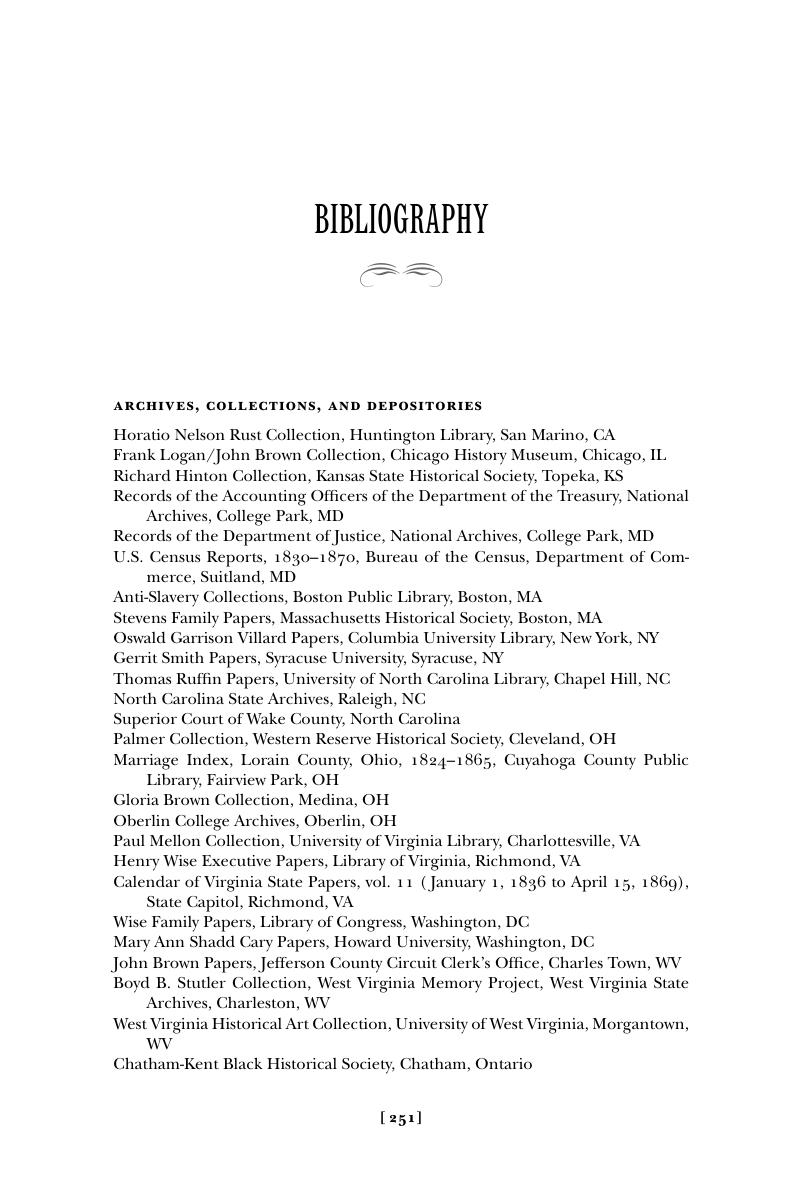Book contents
- Frontmatter
- Dedication
- Contents
- Acknowledgments
- Author's Note
- Prologue
- 1 The Frozen River
- 2 A Good Abolition Convention
- 3 The Colony and the College
- 4 “A Most Well Disposed Boy”
- 5 “I Have Found Paradise”
- 6 “My Object in Coming to Oberlin”
- 7 Not a Fugitive Was Seized
- 8 The New Marshal
- 9 “Recital of the Wrong and Outrage”
- 10 Wack's Tavern
- 11 A Brace of Pistols
- 12 The Oberlin Rescue
- 13 “The Black Mecca”
- 14 The Felons' Feast
- 15 Votaries of the Higher Law
- 16 “The Bravest Negroes”
- 17 The Invisibles
- 18 The War Department
- 19 Hall's Rifle Works
- 20 “His Negro Confession”
- 21 Nothing Like a Fair Trial
- 22 An Abolition Harangue
- 23 Only Slave Stealing
- 24 This Guilty Land
- 25 The Colored American Heroes
- Epilogue
- Notes
- Bibliography
- Index
- References
Bibliography
Published online by Cambridge University Press: 05 July 2015
- Frontmatter
- Dedication
- Contents
- Acknowledgments
- Author's Note
- Prologue
- 1 The Frozen River
- 2 A Good Abolition Convention
- 3 The Colony and the College
- 4 “A Most Well Disposed Boy”
- 5 “I Have Found Paradise”
- 6 “My Object in Coming to Oberlin”
- 7 Not a Fugitive Was Seized
- 8 The New Marshal
- 9 “Recital of the Wrong and Outrage”
- 10 Wack's Tavern
- 11 A Brace of Pistols
- 12 The Oberlin Rescue
- 13 “The Black Mecca”
- 14 The Felons' Feast
- 15 Votaries of the Higher Law
- 16 “The Bravest Negroes”
- 17 The Invisibles
- 18 The War Department
- 19 Hall's Rifle Works
- 20 “His Negro Confession”
- 21 Nothing Like a Fair Trial
- 22 An Abolition Harangue
- 23 Only Slave Stealing
- 24 This Guilty Land
- 25 The Colored American Heroes
- Epilogue
- Notes
- Bibliography
- Index
- References
Summary

- Type
- Chapter
- Information
- The 'Colored Hero' of Harper's FerryJohn Anthony Copeland and the War against Slavery, pp. 251 - 264Publisher: Cambridge University PressPrint publication year: 2015



